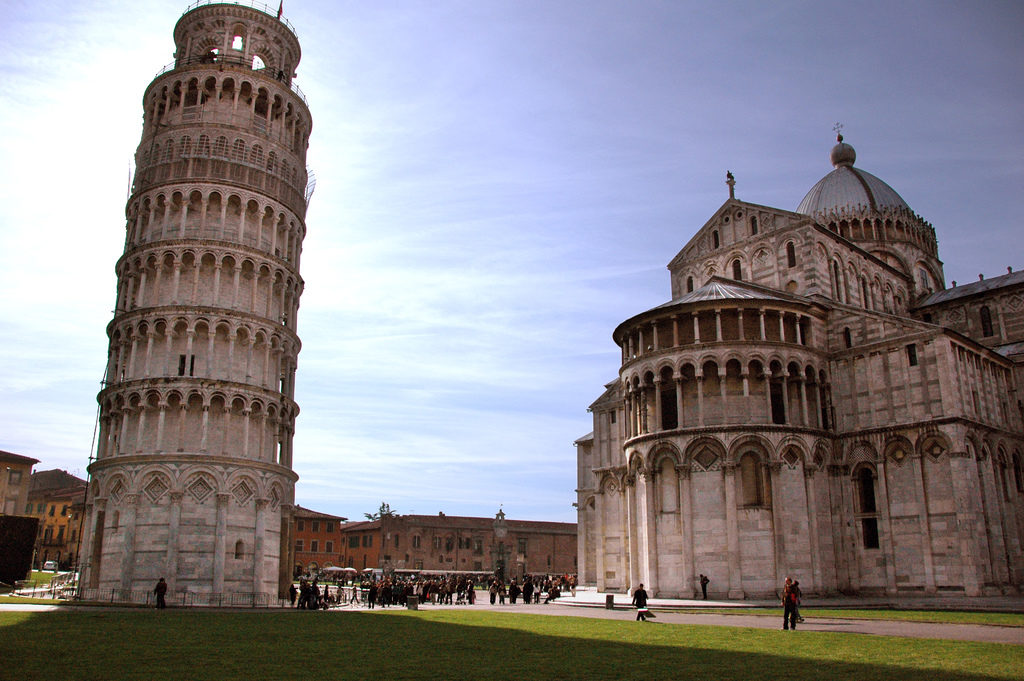This week marks the date, in 1964, when the Italian government finally accepted the need to look for professional help in preventing the Leaning Tower of Pisa from what appeared to be a terminal tilt that would end in collapse. Construction on the bell tower (I know, you got that from the quiz) began in the 1173. Bell towers were often detached from the main church for the somewhat prosaic reason that the large bells might damage the structure of the church. Elsewhere in the Field of Miracles you can see the cathedral, the Camposanto and the Baptistery, all three being separate constructions. As wonderful as the others might be, it is the tower that people come to see, the good burghers of Pisa knew this and feared for a decline in their tourism industry should the tower fall.
The tower began leaning during construction, work was stopped after three levels to allow it to settle and become a bit straighter. By the mid 14th century the tower was still leaning and so the decision was taken to add more steps on one side at the top, the idea being that by adding weight the tower would be balanced and resistant to further lean. It was a process that took ten years, however, the lean continued. Subsequent attempts all dealt with trying to stabilize the tower at ground level, effectively to hold it in place (under Mussolini’s direction, large amounts of cement were poured). Unfortunately, all of these things just made the lean worse and by the 1960’s projections were made that, should things continue as they were, the tower would collapse sometime in the next hundred years. The problem, quite simply was not the size of the tower or its weight, it was the subsoil. The alluvial subsoil, with clay deposits but a sandy base, meant that the tower was always prone to shift.
So, it became clear that the idea had to be dealing with what was beneath the Tower. If the sandy soil could be removed and replaced then this would prevent the continued lean. By drilling into the ground the process was begun, the Tower itself was held in place by large steel cables and blocks of lead at the base. At the time, the tower was shifting 1.2 millimetres per year, so the 700-ton lead ingots were applied as counterweights. The renovation also saw 70 tons of earth removed from around the tower. The work was successful and caused the tower to right itself by 19 inches. By 1998 the tower had been restored to the angle of 1838. Current predictions are that the tower will be good for another 200 years (by which time invisible scaffold will probably have been invented – I’m not sure, I’m not really a scientist).
Climbing the tower is once again possible, it had been closed for over a decade after 1990. There are a limited number of tickets and it is a strict ‘one down, one up’ situation – which makes it tricky finding the time for a group to go. If you have the chance, however, I recommend it. I climbed it many years ago (before it was closed) and it is a mixture of stunning views and vertiginous lean as you go outside onto the and smooth marble ledges (sans barriers) and sense the drop beneath you. Whether you get to climb or enjoy it from ground level, there remains something mildly captivating about the tower that seemed to defy gravity for so long.
Pisa is an optional excursion available on our Europe at Leisure Tour.
Related articles

